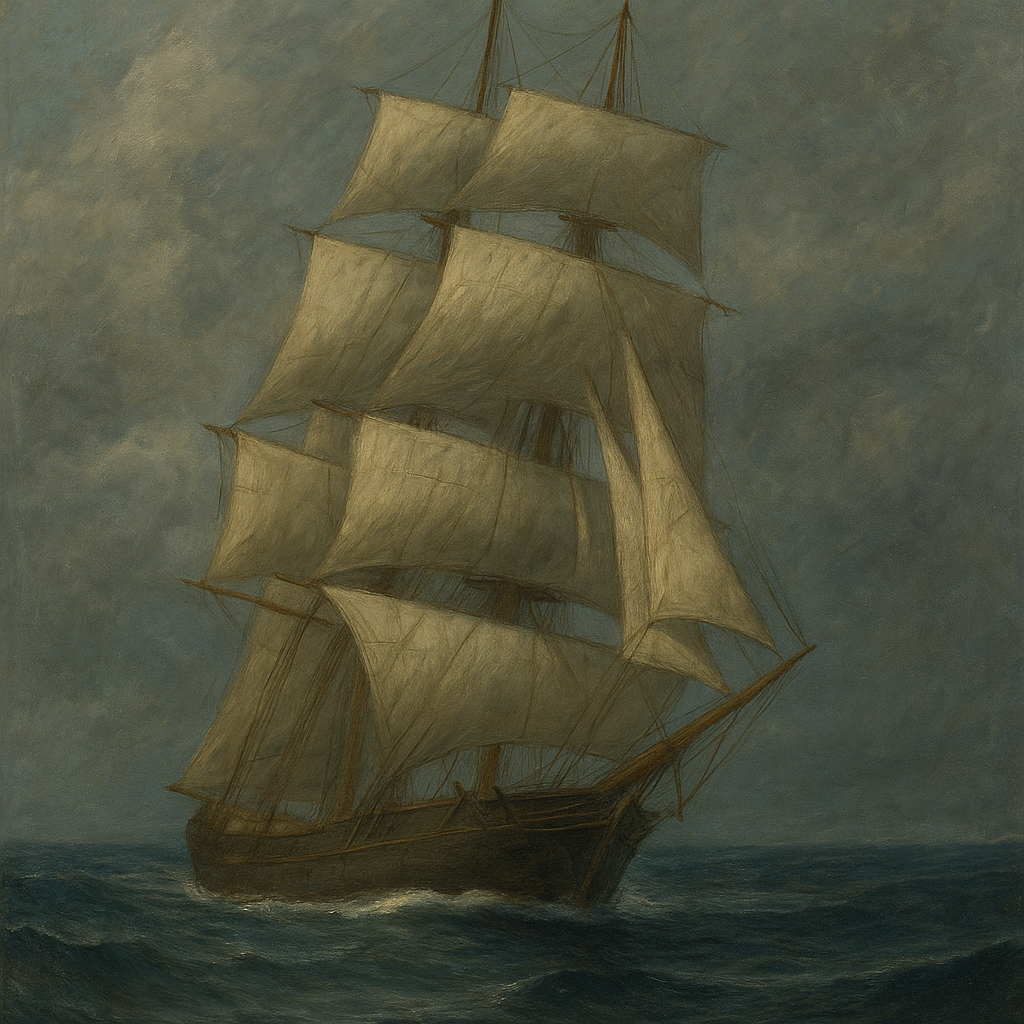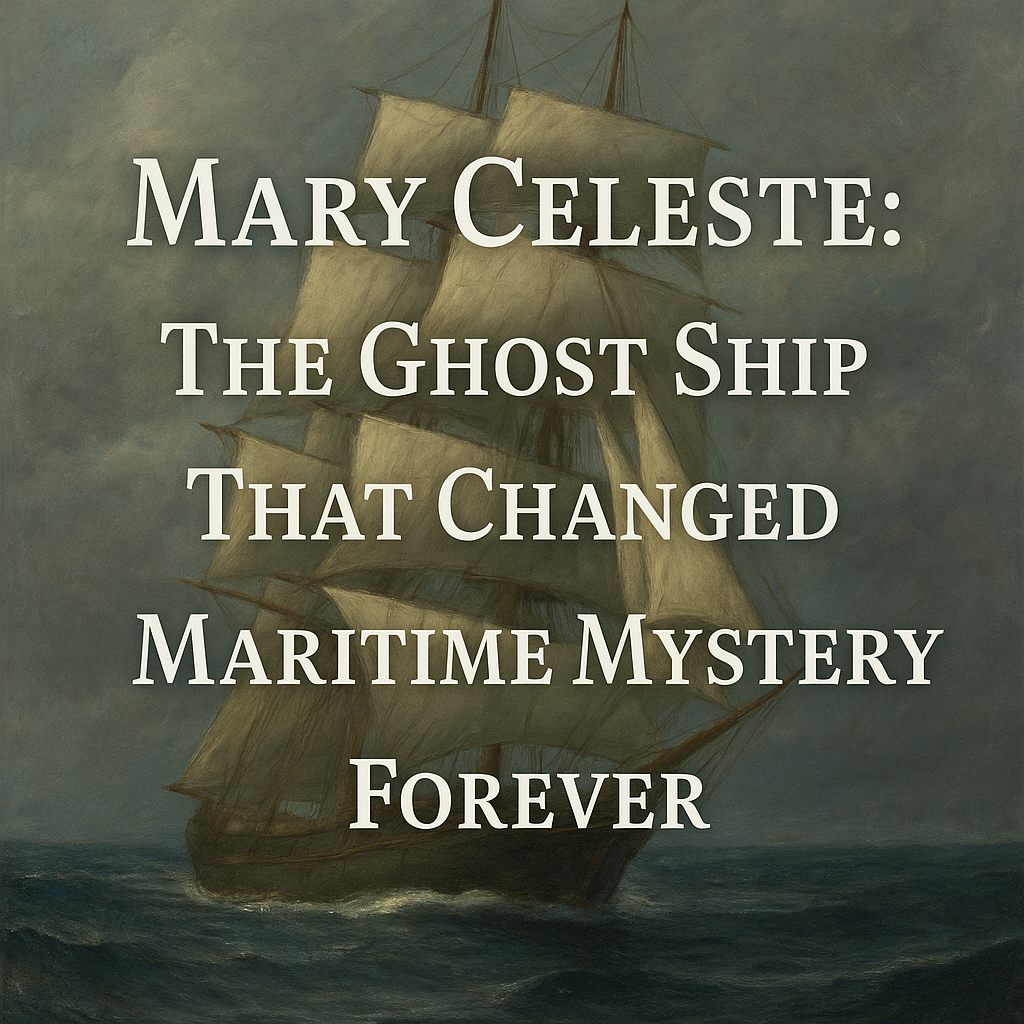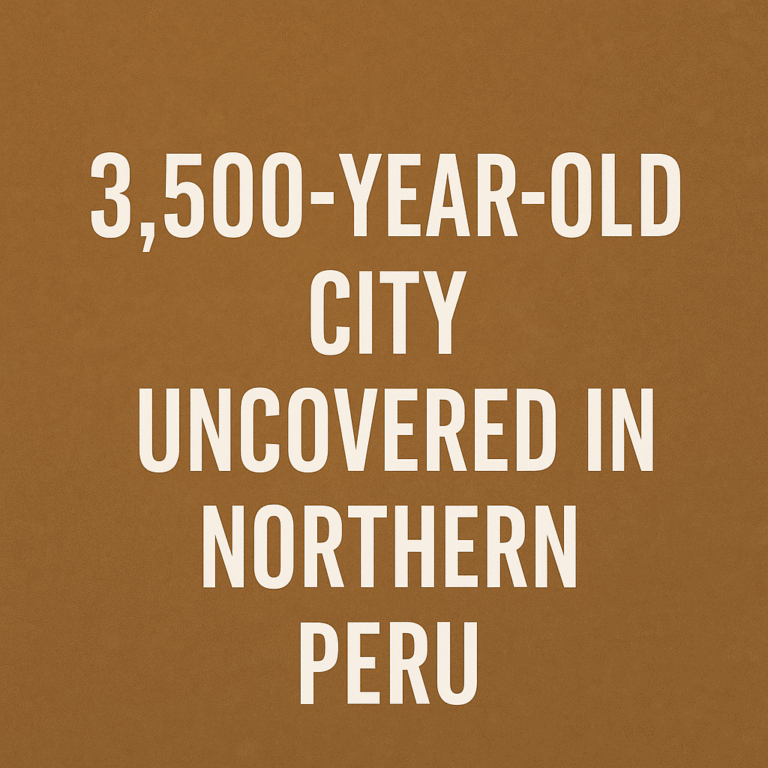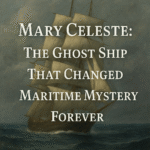
Introduction
The Mary Celeste stands as one of the most enigmatic and enduring tales in maritime history. Discovered drifting, crewless and seemingly unharmed, her story has baffled experts, inspired fiction, and fueled paranormal speculation for over 150 years. In this deep dive, we’ll explore her origins, every leading theory, her cultural impact, and why she still sends chills down our spines. Along the way, I’ve noted ideal spots for your Amazon affiliate links and ads, ensuring both reader engagement and monetization potential.
📌 (Book on Mary Celeste ) – Check Out On Amazon
1. The Birth and Background of the Mary Celeste
Launched in 1861 in Nova Scotia as the Amazon, the ship’s early career was unremarkable until tragedy struck. After a grounding incident, she was sold and renamed Mary Celeste in 1869. Over her seven-year active period, she was lauded for her speed and seaworthiness—until the fateful 1872 voyage.
1.1 The Vessel’s Make-up and Build
- 103 feet long, two-masted brigantine
- Wooden hull with strong framing, built for coastal trading
- Usually crewed by experienced seamen under Captain Benjamin Briggs—known for his skill and composure
1.2 The Ill-Fated Voyage Begins
On November 5, 1872, under Captain Briggs’s command, the Mary Celeste set sail from New York, bound for Genoa, Italy. The manifest included 1,701 barrels of industrial alcohol—potentially volatile cargo. Onboard were Briggs, his wife Sarah, their two-year-old daughter Sophia, and a crew of seven.
Total persons: up to 11
Cargo: industrial alcohol
Route: New York → Lisbon → Genoa
2. The Discovery That Shocked the World
2.1 The Dei Gratia Encounter
On December 5, the British brigantine Dei Gratia happened upon the Mary Celeste, adrift about 600 nautical miles west of Portugal. To the Dei Gratia’s crew, the scene was baffling:
- Ship was seaworthy—no listing, hull intact
- Cargo secure; no smoke, no fire, no explosion
- Lifeboat and papers were missing
- A single chronometer showed a ten-day gap since the last log entry
2.2 Boarding and Observations
Upon boarding, the Dei Gratia’s crew found:
| What They Found | Observation |
|---|---|
| Crew’s personal gear | Left untouched |
| Provisions | Enough for six months |
| Last log | Logged November 25—no distress |
| Personal valuables | Undisturbed |
| No bodies or signs of violence | No negotiations or ransom note |
2.3 The Aftermath
The Mary Celeste was brought to Gibraltar for salvage proceedings. News of the “ghost ship” circulated in newspapers throughout Europe and America. A 19th-century media frenzy ensued—each new edition more speculative than the last.
3. Theories That Tried to Explain the Disappearance
With no crew and no concrete evidence, many theories emerged:
3.1 Piracy and Foul Play
One early speculation was piracy or murder—but no valuables were taken, and no signs of struggle existed. Plus, all personal items remained untouched.
3.2 Mutiny and Crew Conflict
A mutiny might explain the abandonment, but motives and outcomes were unclear. Captain Briggs was known to be respected by his crew, reducing the likelihood of internal rebellion.
3.3 Alcohol Fumes & Vapor Explosion Theory
A prevalent theory centers on alcohol leaks. If fumes built up, the crew might have believed an explosion imminent.
- Crew moves to lifeboat — “precautionary abandonment”
- Eventually the ship drifts away
- Tragically, the lifeboat may have capsized in rough seas
This theory is compelling: cargo intact, no explosion evidence aboard, and the abandoned lifeboat was never found.
3.4 Natural Phenomena
- Rogue waves or waterspouts could have drenched the deck
- Fearful crew abandon ship mid-crisis
- Fate: lost in ocean, no possibility to return
Historical weather records from Atlantic logbooks indicate generally calm conditions—but local, unpredictable storms could have played a role.
3.5 Incapacitating Diseases
Disease outbreaks were common, especially among tight-knit crews. But absence of bodies, visible illness survivors, or biological traces weaken this idea.
3.6 Ghostly & Paranormal Speculation
No solid evidence supports supernatural causes—but public imagination ran wild. Tales involving sea monsters, alien abduction, or curse-lore gained traction in pulp magazines and fiction.
3.7 Theories Disproven Over Time
Subsequent investigations dismantled early sensationalist claims. Logbooks from sister ships did not support piracy. Insurance inspect residual alcohol samples for safety. The books on Amazon about The Legend of the Mary Celeste and later peer-reviewed maritime journals dispelled dramatic retellings.
4. Evidence and Further Investigations
4.1 Financial & Classified Reports
Insurance firms and salvage courts investigated thoroughly. No conclusive liability was established—findings usually pointed to accidental abandonment.
4.2 Witness Statements & Contemporary Accounts
Crew from the Dei Gratia consistently reported calm seas and an undisturbed vessel. Their sworn depositions are archived in British maritime courts.
4.3 Modern Forensic Re-examination
In recent decades, historians have re-analyzed cargo manifests and found possible ethanol leakage; damaged hose fittings were discovered post-salvage. This supports the alcohol fumes theory as plausible.
5. Cultural Legacy and Literary Reverberations
The legend captured imaginations from pulp fiction to modern documentaries.
5.1 In Literature
- Arthur Conan Doyle’s “J. Habakuk Jephson’s Statement” (1884) fictionalizes a violent mutiny
- Numerous novels weave the Mary Celeste into supernatural, detective, or psychological narratives
5.2 On Screen and Radio
- Featured in Ghost Ship episodes and Seaside Mysteries series
- Covered in PBS, National Geographic documentaries—often supporting or refuting the fumes theory
5.3 In Popular Culture
Words like “ghost ship,” “abandoned at sea,” and “maritime enigma” are frequently cited today with reference to the Mary Celeste.
8. Final Thoughts and Call to Action
The Mary Celeste continues to haunt human imagination not just because her crew vanished, but because the vessel offers no final answers. Instead, she stands as a testament to the power of unanswered questions. Whether it was human error, chemical accident, natural forces, or something beyond explanation—it remains one of the sea’s greatest unsolved mysteries.
What do you think happened? That question is part of her legacy. I invite you to explore the recommended books and documentaries below for a deeper analysis.
📌 (Maritime Mystery Gift Set On Amazon.)
Adventure/thriller book set On Amazon.
Check out our other articles in TimePinned.








